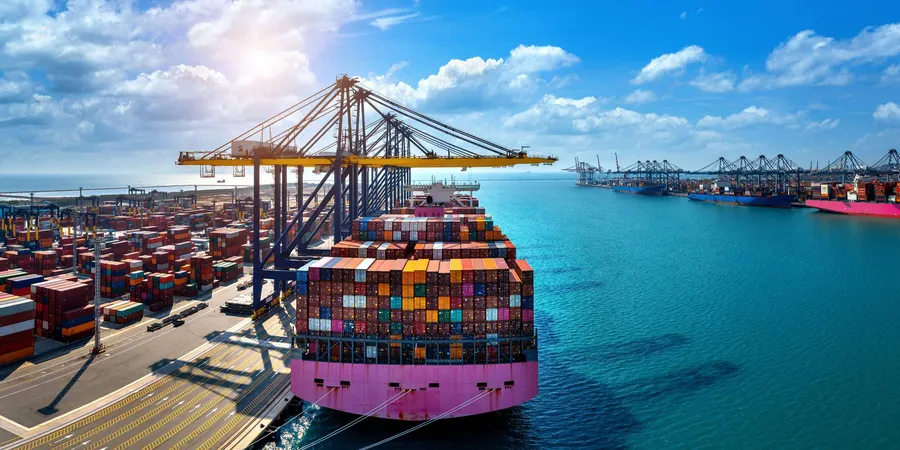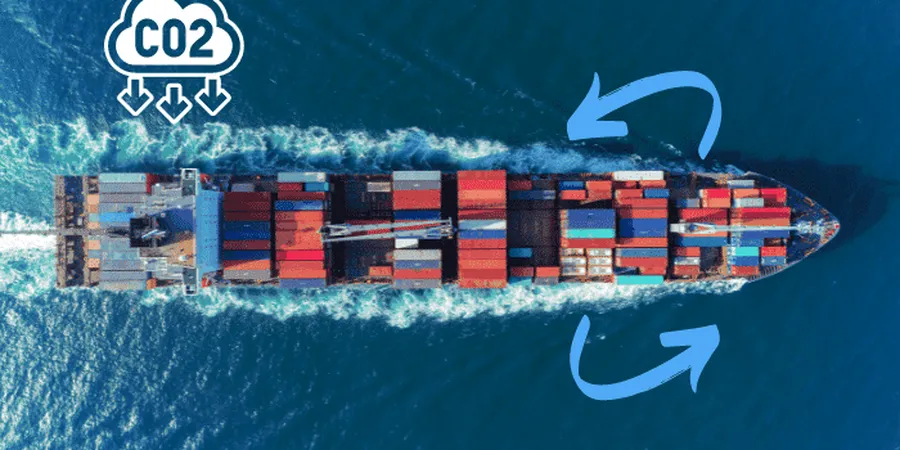What are One-Trip Shipping Containers or Single-Use Shipping Containers?
As the name suggests, a one-trip or single-use shipping container is a new container that has been used only once for carrying cargo. After completing the single trip, it is sold to another buyer.
Strange as it may sound, let us see how this works. After purchase, it is leased to a third party, loaded with cargo for a single trip, and the brand-new container is shipped to its final destination. Once the cargo is unloaded at the destination port, the empty container is sold in the aftermarket.
Such containers are then used for various purposes. It is used for the storage of goods, in the manufacture of container homes, and also for transporting cargo – remember that it is ‘essentially’ a brand-new container that has made just a single cargo-carrying journey.
A one-trip shipping container has not spent much time sailing or being moved between several warehouses, depots, and terminals, and therefore such shipping containers are normally found to be in prime condition.
Aftermarkets
Before we go forward with one-trip shipping containers, let us understand what an aftermarket is. An aftermarket is a place that usually sells brand-new, but generic parts and items. It is mostly associated with the automobile industry. Such parts or items are not manufactured by their original manufacturers (OEMs or Original Equipment Manufacturers), but by third parties.
What purpose does the aftermarket serve? This is the place people usually go to when they need a machinery part or a piece of equipment urgently. Normally, such parts and equipment are available readily in aftermarkets and most of them are compatible with different brands. They are usually cheaper and conform to the quality of the original.
There is no waiting time as in the case with most original components. However, the aftermarket is not a regulated industry.
Cost Cutting
A new container may be picked up from its manufacturing plant by the buyer and then shipped to its destination without cargo. While buyers may do this to minimize damages to the new container due to cargo load, it is mostly because they would not have found a ready customer for leasing. This is sometimes referred to as a one-way shipping container.
Instead of shipping a newly purchased empty container to the buyer’s location, after procurement, the buyer may get the necessary markings done on the container and immediately lease it to a third party for transporting cargo to his destination. This is one way of cutting costs.
At the destination, after unloading, the container is collected by the original buyer to be used for his purposes – for shipping cargo, storage of goods, or to be used as a container home. As these containers are almost ‘brand-new’ they can easily last for 25 years, if not more, just like any brand-new container. A one-trip shipping container, that has completed its first sea voyage is usually put through a paint job and any minor bumps and dents repaired.
Unlike a used container, a one-trip shipping container comes in good condition requiring minimum repairs and maintenance. There are traders in some markets who specialize just in one-trip shipping containers. It still works out cheaper for buyers in that market than picking up a brand-new shipping container.
There are also those who pick up such containers from the aftermarket, reposition them according to container prices at different locations, and then sell to customers. For this, all that the seller needs to do is find a customer waiting to transport his cargo to the location from where the container is to be sold.
A simple example would help us understand this better.
The Globus Company in Dubai, UAE, purchase a single 40 feet shipping container from a container manufacturing unit in Shanghai, China for USD 3500. It then leases the container to Bonbon Trading for shipping a consignment of leather shoes to Dubai, UAE for USD 1500.
Once the cargo reaches its destination and the consignment is customs-cleared and unloaded, the Globus Company sells the shipping container for USD 3000 to a customer based in Dubai.
In this case, the Globus Company makes a profit of USD 1000. Though the sale price is less by USD 500, overall, the company has made a profit of USD 1000, which includes the single trip leased to Bonbon Trading from Shanghai to Dubai, UAE.
Purchase price of the 40 feet container : 3500. 00
Sale price to the customer in Dubai, UAE : 3000. 00
Loss on sale of 40 feet container [3500 – 3000] : 500. 00 (-)
Lease amount received from Bonbon Trading : 1500. 00 (+)
Gross profit of Globus Company after completing steps (a) to (d) 1500 – 500 = USD 1000. 00
Please note here that the prices shown above are not the actual current market prices and are used only as an example. The actual cost and rate of a one-trip shipping container will vary between locations, the condition of the container, as well as the price negotiation between the buyer and seller.
One-trip V Used Shipping Containers
Why a one-trip shipping container and not a used container? A used shipping container is one that has been through several voyages and movements over land and sea. It would have gone through several loadings, haulages, liftings, stackings, and unloading. All these processes take their toll on the life of any shipping container.
Though shipping containers are made of tough CORTEN steel that is resistant to corrosion, they can easily get damaged if not handled properly.
The average life of a shipping container is considered to be 25 years. It needs periodic maintenance to last this long. Those containers that have not been maintained properly will degenerate sooner and become unfit for cargo shipment. They will not pass the mandatory container inspection that is required once every 30 months or within 5 years for new containers.
Container inspections are carried out by certified CSC (Convention for Safe Containers 1972) inspectors. However well-maintained a used shipping container may be, a one-trip shipping container will at any time be far superior.
Coming back to one-trip shipping containers, the very first trip of such a container is not without its share of scratches and minor dents. Lifting and moving containers can cause the container to lose paint, develop dents, or its moving parts such as doors and locks to be damaged.
However short a voyage may be, machinery handling equipment (MHE) and storage conditions can cause some wear and tear to the container. Moving joints that are not lubricated, such as door hinges and worn-out door rubber seals are viewed as minor damages.
One-trip shipping containers are available in all sizes, such as 20’, 40’, 40’ hi-cube, refrigerated containers, open tops, etc.
China, which is considered the leader in shipping container manufacturing, is also the place from where most such one-trip shipping containers originate. Currently, there are several online platforms that facilitate buying and selling of one-trip shipping containers.
Source: Marine Insight





